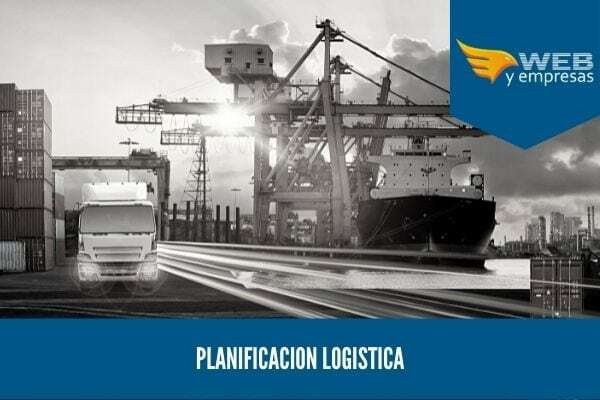The reverse logistics should be a unique way of operating companies so that socially responsible companies really exist, for For example, reverse logistics has to do with post-sale waste collection, a situation that is rarely seen in the reality. In this world, we need companies committed to the environment and therefore to society, which not only collect their waste, but also recycle or reuse it.
In this article you will find:
What is reverse logistics and what is it for?

Advertisements
It is a planning process, through which the flow of materials is efficiently controlled premiums, during production, on finished products until post-sale recovery or disposal or consumption.
Becoming a logistics in charge of contemplating the return or elimination of certain materials after the consumption of the product, from the customer to the point of origin.
Advertisements
In a few words, it could be defined as the recovery strategy for waste or residues caused by productive and / or consumer activities.
Said logistics arose in the search for caring for the environment, a need that with the growth of the population is increasingly does is more important so it is necessary for reverse logistics to evolve and gradually adapt to the needs of the sector.
Advertisements
It is used for the creation of plans that lead the selective collection of waste or residues, from industrial, electrical or electronic equipment, construction to waste by-products meat.
It is in charge of the recovery and recycling of packaging and containers, the recovery and elimination of hazardous waste, of executing the processes of return of excess inventory, or seasonal inventories, customer returns, obsolete products, etc., as a way to return useful, reusable materials that are recycled or must destroy themselves.
Advertisements
Contributions of reverse logistics
Reverse logistics is not only a necessity for the environment, it represents the opportunity to reduce costs by increasing the quantity and quality of recyclable material.
Advantages of reverse logistics
The reverse logistics process it can have its clear advantages, such as:
Advertisements
- Care and protection of the environment, effectively reducing the environmental impact caused by waste.
- Cost reduction by recycling, reusing or even manufacturing again, constituting savings in the purchase of raw materials.
- Improves the relationship between customers and suppliers.
- Improves the image of the company.
- Facilitates the flow of information and feedback regarding the product.
Disadvantages of reverse logistics
Between the drawbacks of reverse logistics you have:
- Represents an increase in work, carrying out all the processes involved in reverse logistics is not simple, requires supply chain management and adequate programming to work correctly.
- It requires the participation of all the departments of the company, so that the daily work flows smoothly.
- Requires qualified personnel to inspect returned materials, which can be costly.
- It is necessary that the return amortizes the cost of reverse logistics, if the returned quantity is small, possibly recycling or reuse is not worth the effort.
Types of reverse logistics
This process can be basically classified into two types:
Reverse logistics of returns
It is the process by which the return, recycling and / or reuse of containers, packaging or other material is handled, as part of the final product of economic value for the producer, which for his part the consumer may not to take advantage of.
Generally, an agreement is made between the parties to initiate a return process in exchange for a discount in obtaining a new final product.
Reverse waste logistics
Of logistics that handles the waste generated by the final product, which does not represent any value for the client or for the producer. However, for ecological reasons its disposal requires special treatment.
In general, and sometimes by law, the producer must take care of it.
Goals of reverse logistics
The objectives of reverse logistics They are various and depend on the type of product and its use, then the most frequent objectives of this logistics process.
· Recycle
It is the main objective of reverse logistics, it consists of the recycling of materials used in containers and packaging that do not They represent utility for the client and when they are returned to their manufacturing center they can act as raw material for a new product.
This alternative also represents a beneficial practice for the environment.
· Manage waste
It treats the waste generated by final products that do not support a benefit for the client and neither for the producer, but that they must be treated correctly to comply with some sanitary regulations, in addition to being responsible ecologically.
Replace products
It handles the usual incidents that happen in the delivery of orders, such as error in the preparation of the order, change by default, among others. In these cases, the customer delivers the product that the supplier is not interested in, in exchange for the product that the customer demands.
Return a merchandise
Handles customer complaints, being it possible that the customer decides to return it and no longer wants any other product in its place.
In that case, the client returns the product to the supplier and it will not be charged or the refund of the money is managed.
Reuse
It is the process by which the channels are created for the return and handling of packaging and materials of value for the company.
In this case, the supplier and the client agree to a discount in exchange for the return of these materials.
Re-manufacture
It is a process similar to recycling, although it is a less common activity, it consists of the extraction of useful components so that they form part of new products.
This process is a beneficial alternative for the environment as well as lucrative for the manufacturer.
· Destroy
It consists of the handling of materials that cannot be reused, recycled, or re-manufactured and require to be directly destroyed, and the most efficient way to manage this destruction is if it is carried out responsibly by the company producer.
Finally, it is important to note that reverse logistics In addition to being ecologically important, it is a quite significant process in the supply chain, knowing its operation and possibilities provides alternatives and opportunities for companies to implement an interesting and profitable practice economically.


